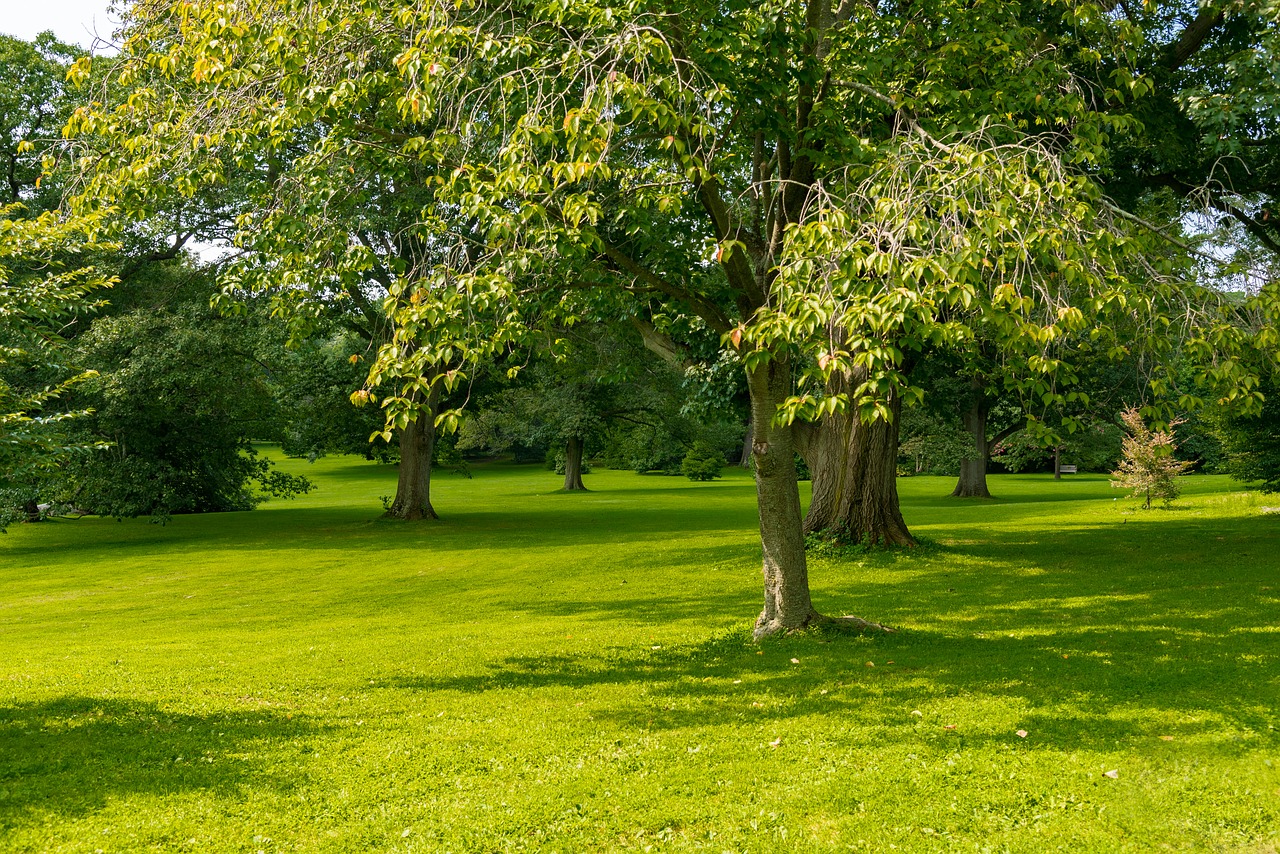
It is true, it can be a question with a very easy answer, but… what is the difference between a deciduous tree and an evergreen tree? We often think that the former are those that are completely bare during the fall and winter, and that the latter remain evergreen throughout the year and every year. Well, this is not entirely true, and in this article I will explain why.
Knowing the behavior of the tree species that we want to take home is essential to avoid problems and dislikes. And one of the most important things we have to know is whether they are deciduous or perennial.
Deciduous tree
Let's start with those that are deciduous, that is, they are deciduous trees. In the Northern Hemisphere we tend to think that these are the ones that lose their leaves in autumn, but the truth is that, for example, in Africa there are species, such as the Adansonia digitata, which loses them in summer. So that, How are deciduous trees characterized?
Well, these plants are those that are devoid of leaves during some time of the year, either autumn-winter, or during the summer. The cause is the weather: in temperate regions, after having spent a few months with high temperatures, they begin to drop, and they do so so much that the leaves cannot bear it; On the other hand, in arid regions, during the summer it can be very hot and little or no rain, so the plant must take emergency measures if it wants to save water.
Examples of deciduous trees
Some deciduous trees are:
Aesculus hippocastanum (horse chestnut)
El horse chestnut it is another tall tree. It reaches 30 meters, and has a dense and wide crown. Its leaves are composed of 5-7 green leaflets, which fall in autumn.
Originally from the Pindo Mountains and the Balkans, withstands frosts down to -18ºC.
Acer pseudoplatanus (fake banana)
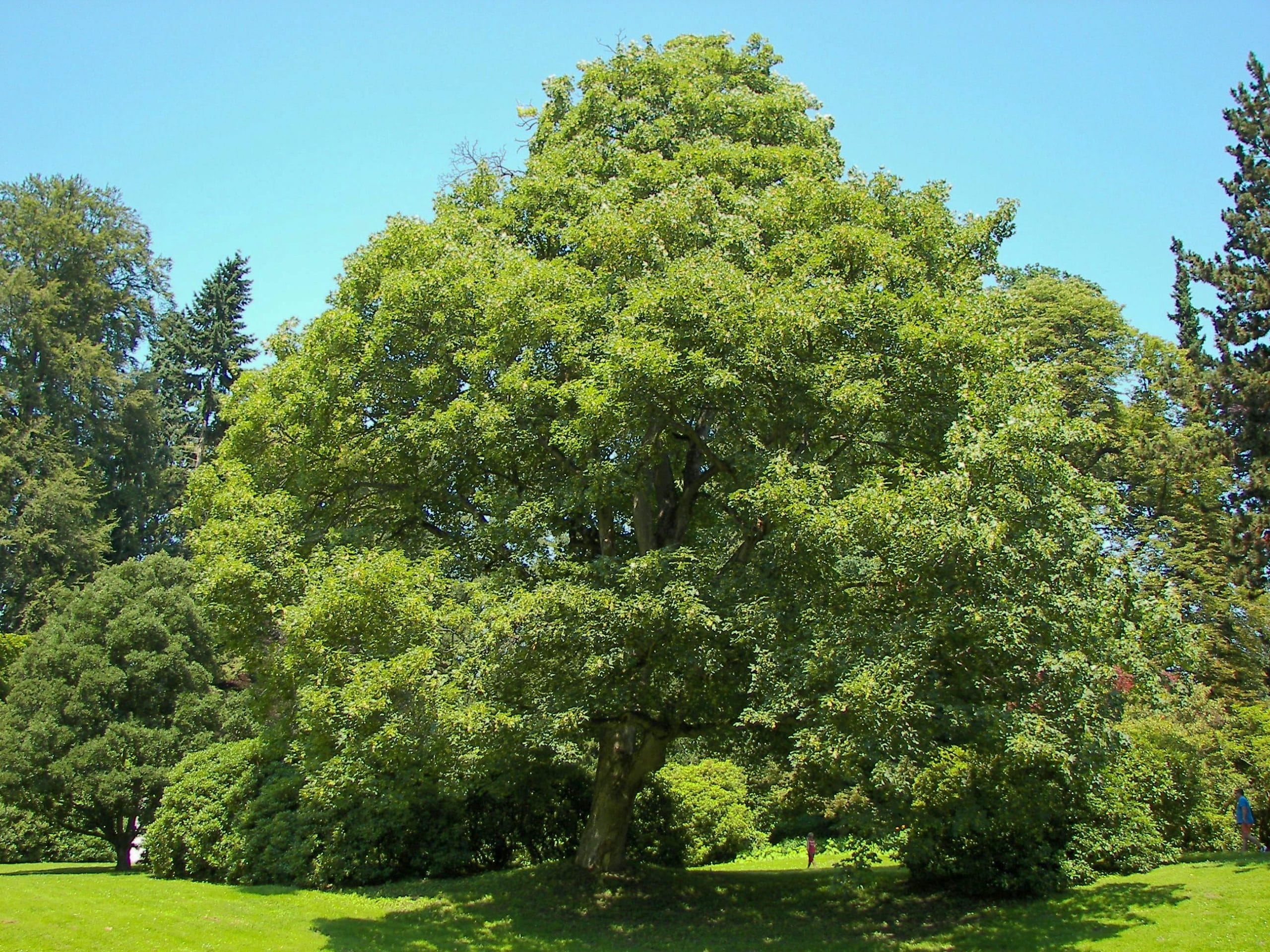
Image - Wikimedia / Willow
El fake banana It is a tree that reaches 30 meters in height and has a very wide crown, made up of palmate green leaves. It grows naturally in central and southern Europe, so it likes temperate climates with frosts.
In fact, resists up to -18ºC. But yes, it should not be grown in tropical or subtropical climates, since it needs to be cold in order to grow well.
Albizia julibrissin (acacia from Constantinople)
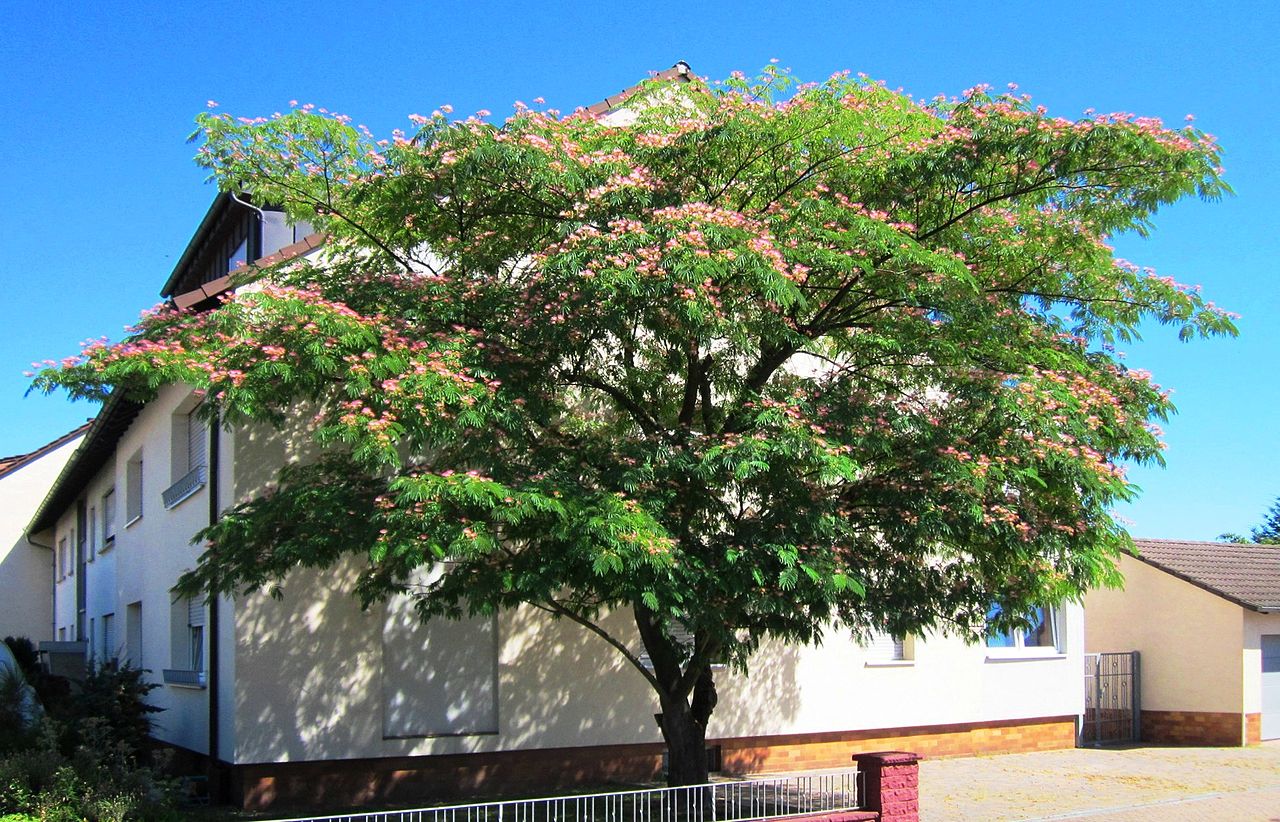
Image - Wikimedia / AnRo0002
La acacia from ConstantinopleAlso known as the silk tree or the silky-flowered acacia, it is a tree that reaches 15 meters in height. Its crown is dense, wide and open, composed of bipinnate green leaves. In spring it produces pink flowers.
It grows wild in Southeast and East Asia, and is widely cultivated in gardens in places where the climate is warm-temperate. Withstands cold and frosts down to -18ºC.
Erythrina caffra (South African coral tree)
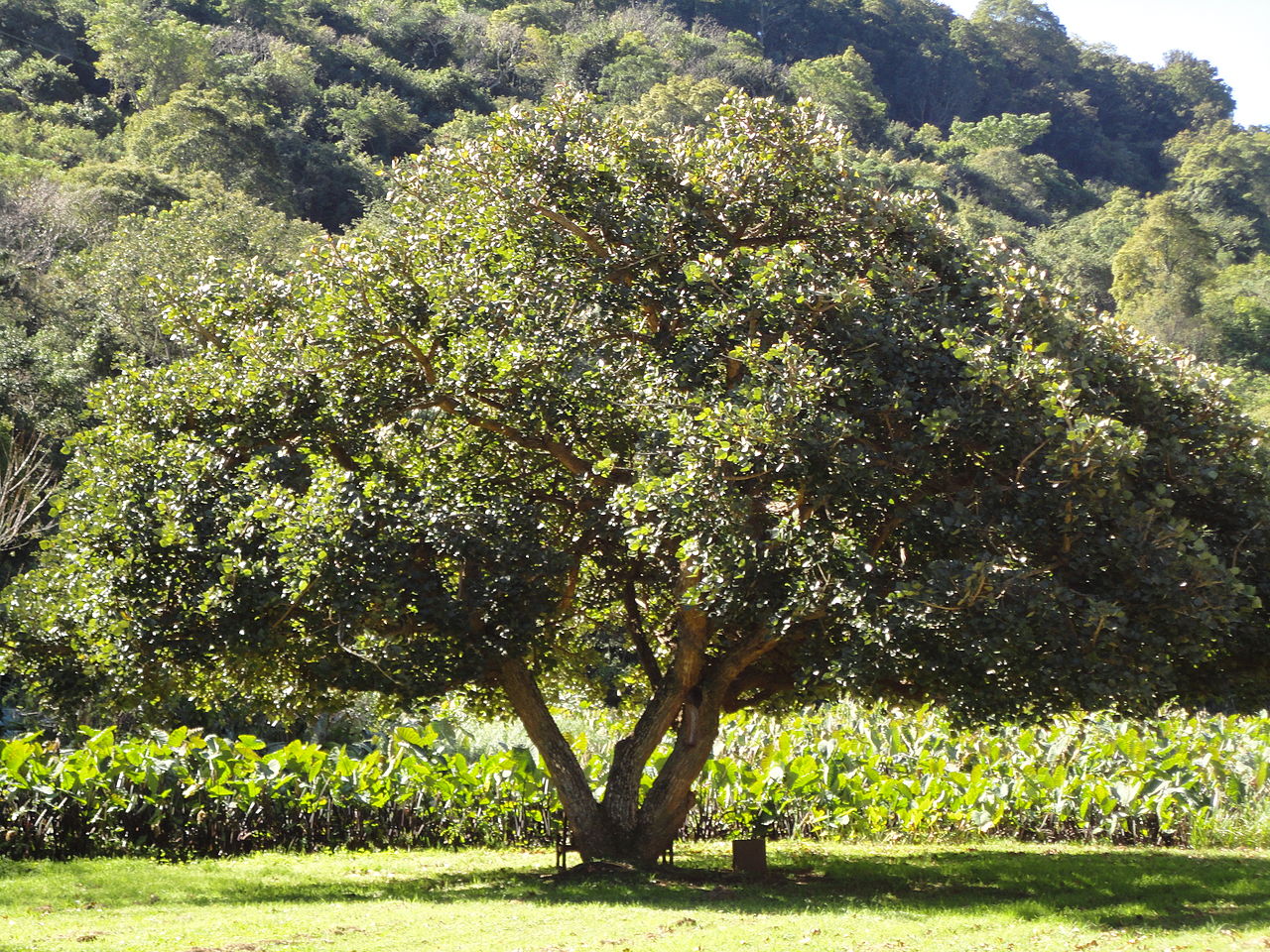
Image - Wikimedia / JMK
El South African coral tree it is a plant that loses its leaves just before the dry season if the climate is tropical, or towards autumn / winter if it is temperate. It reaches between 9 and 12 meters in height, and has a parasol crown, as well as short but thick thorns on its branches. In spring it produces red flowers.
Originally from South Africa, but despite that it has proven to be very interesting for places where the climate is a little cooler. Supports up to -7ºC if they are specific and short-term frosts.
ficus carica (fig tree)
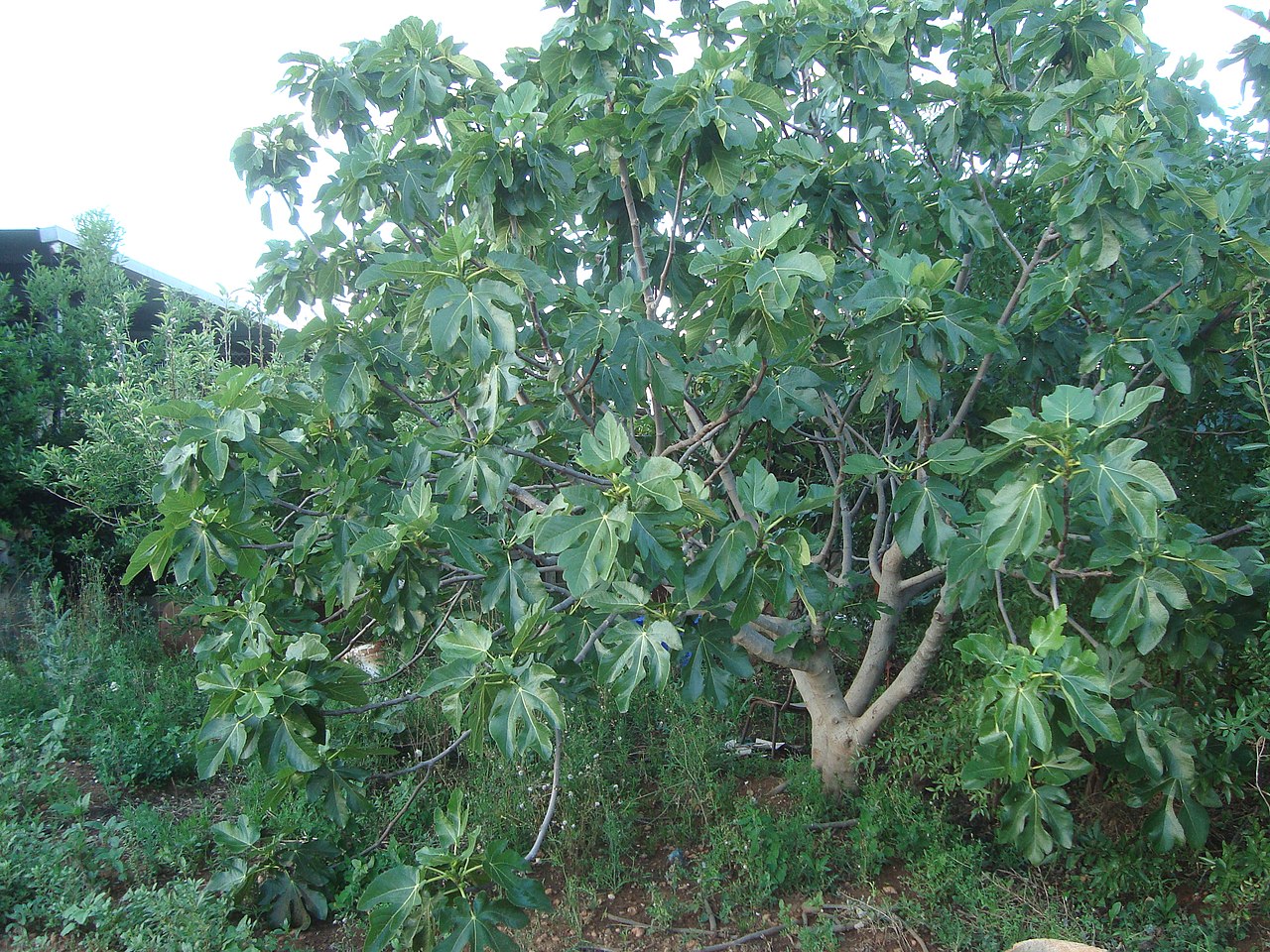
Image - Wikimedia / Juan Emilio Prades Bel
La fig tree, or to be more specific, the Mediterranean fig tree, is a tree or large shrub that reaches 7-8 meters. Its crown is very open, formed by leaves composed of 3-7 lobes. During the summer it produces edible fruits, figs, which have a sweet taste.
It is native to south-west Asia, but in the Mediterranean region (east and south of the Iberian Peninsula, and in the Balearic Islands) it has become so well naturalized and cultivated so much that it could almost be said that it is also typical of those places. It resists well the frosts of up to 7ºC, as well as the drought.
Evergreen trees
Evergreens, evergreens, are those that always have leaves. But beware, this does not mean that you always have the same ones. In fact, Throughout the year you will lose them as they come out of new. For this reason, sometimes it is not a good option to put perennial species near swimming pools, since they would end up dirtying it even more than a deciduous one.
Examples of evergreen trees
Some evergreens are:
acacia saligna (blue acacia)
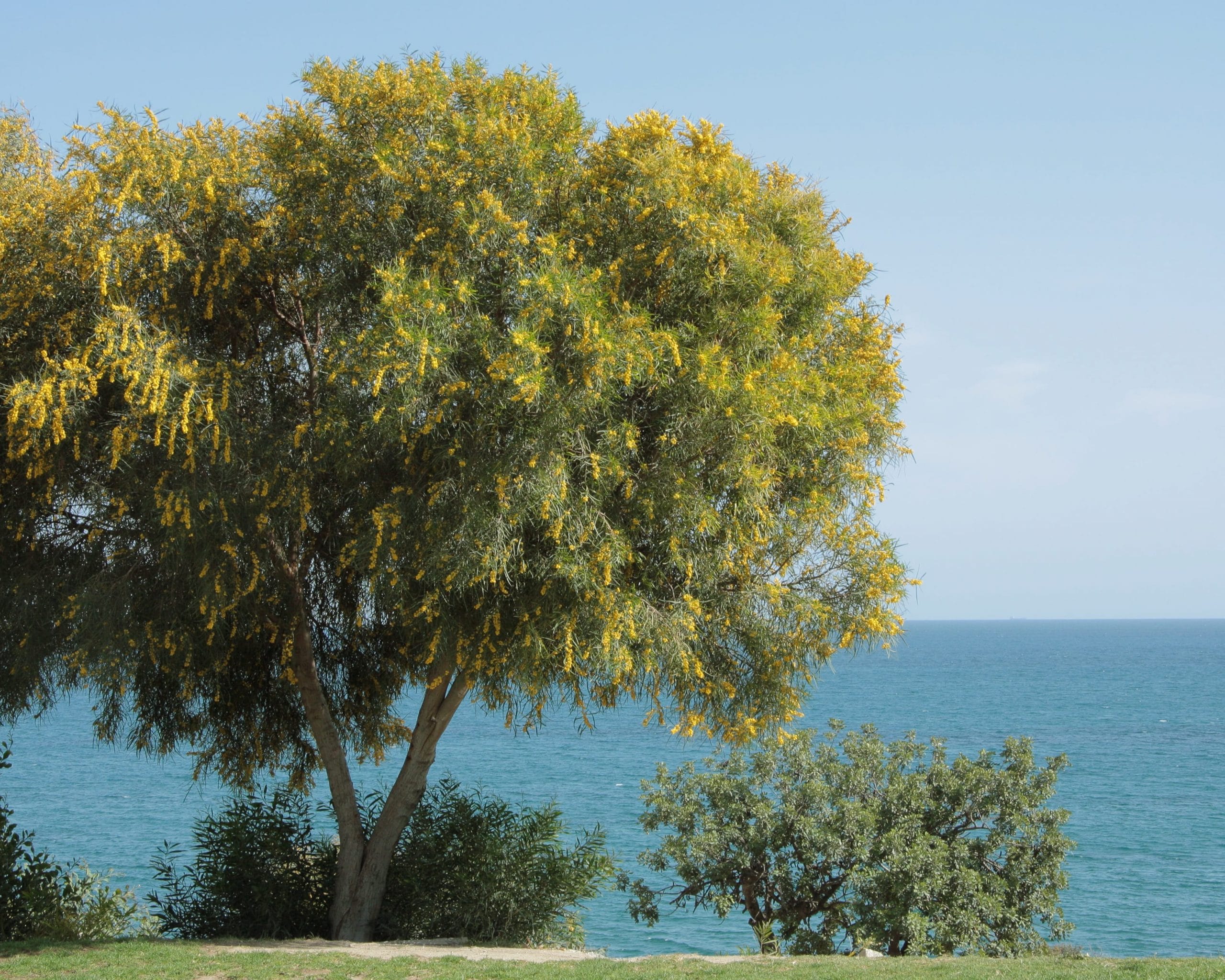
Image - Wikimedia / Anna Anichkova
The blue acacia is a tree or small tree about 3 to 8 meters high that has a very leafy crown, with hanging branches that give it a very ornamental weeping appearance. The leaves are linear, dark green. In spring it fills with a large number of yellow flowers.
It is native to Australia, and grows well in warm and temperate climates, with frosts down to -7ºC.
Ceratonia siliqua (carob tree)
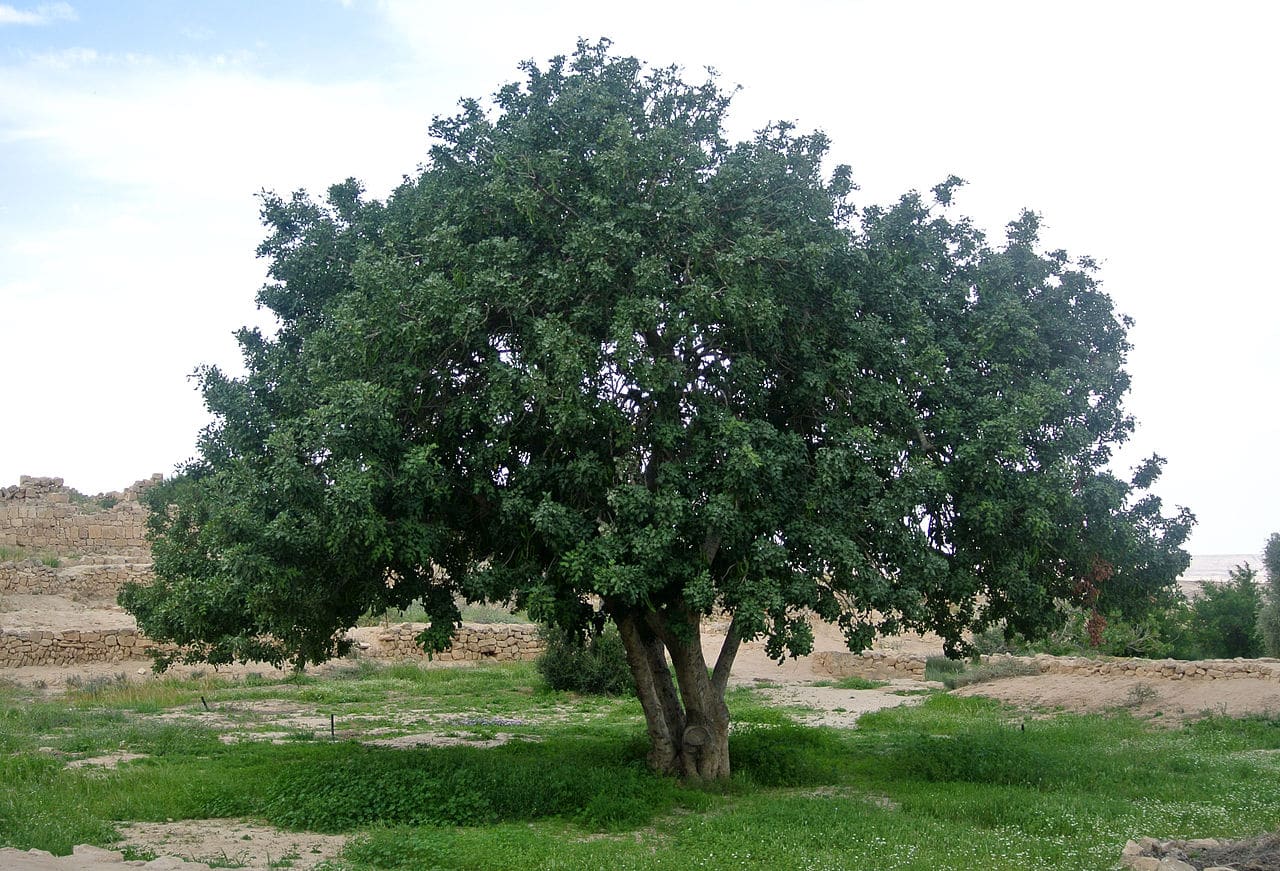
El carob tree It is a tree that can reach 10 meters, but generally does not exceed 5-6 meters. Its crown is highly branched, and produces dark green paripinnate leaves. It blooms in spring, and its fruits are carob beans or carob beans, which are nothing more than leathery pods. Inside are the seeds, protected by a gummy pulp which is edible.
It grows naturally in the Mediterranean Basin, and it resists frosts down to -7ºC. Nor do droughts harm it.
Citrus reticulata (mandarin)
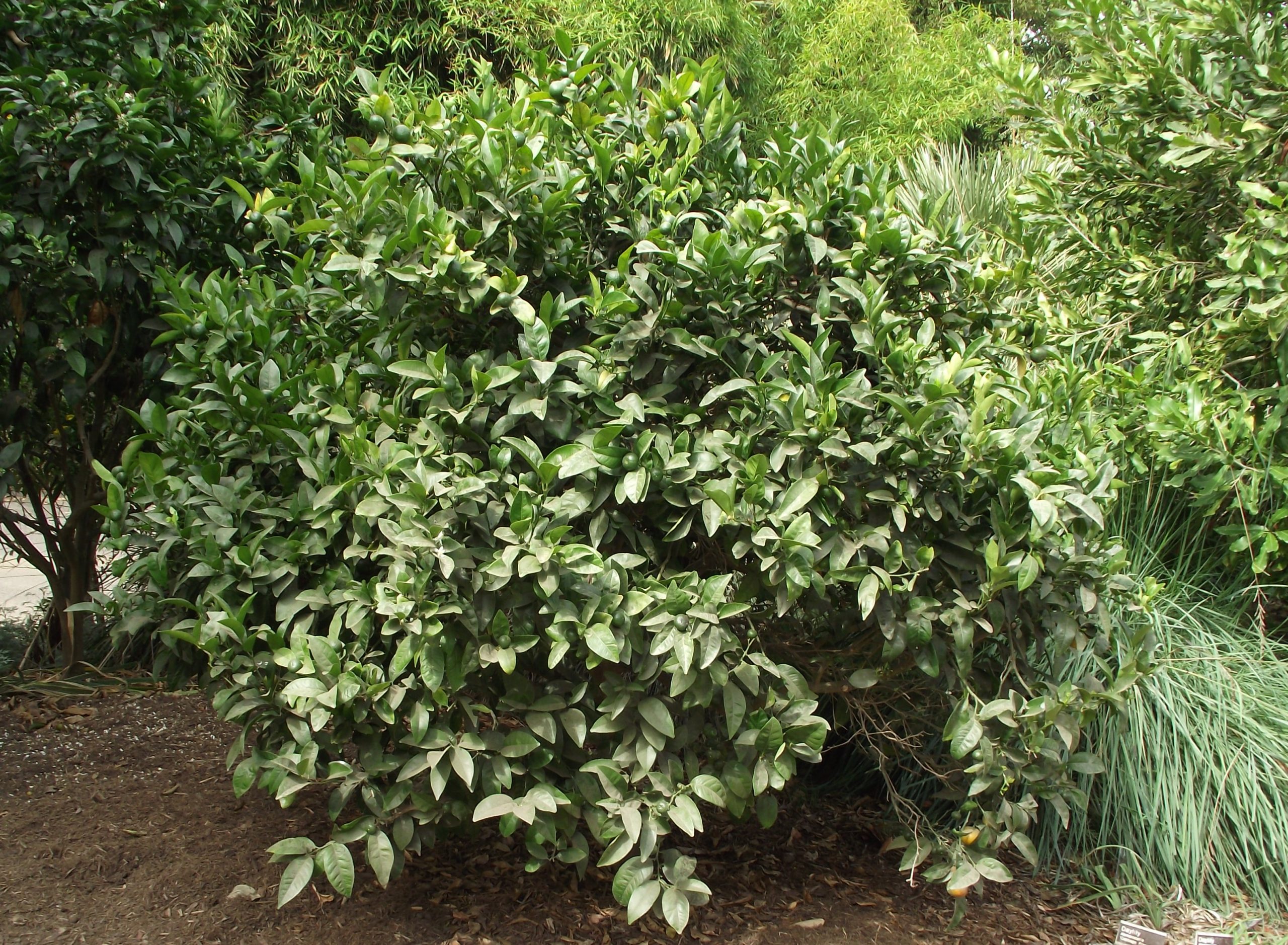
It is important to clarify that all citrus fruits are evergreen, but for this list we are left with the mandarin since it is very appropriate for small gardens and pots. It reaches between 2 and 6 meters in height, and its crown is dense but without thorns. The leaves are dark green on the upper side and lighter on the underside. In spring its small and aromatic white flowers sprout, and towards the summer its fruits finish ripening, which are rounded, with orange skin and juicy pulp or segments.
Native to the Philippines and Southeast Asia, it is an ideal tree to grow in hot climates, where in case of frost, these are up to -7ºC.
Cupressus lusitanica (San Juan cedar)

Image - Wikimedia / Sergio Kasusky at Flickr
The San Juan cedar is a conifer that reaches 30 to 40 meters in height, with a straight and thick trunk up to 2 meters in diameter. It develops a conical crown, with scaly green leaves. It bears fruit from summer to winter.
Its origin is from Mexico to Central America, so it lives in luxury in hot climates and, also, in which there are frosts down to -7ºC.
Pinus nigra (black pine)
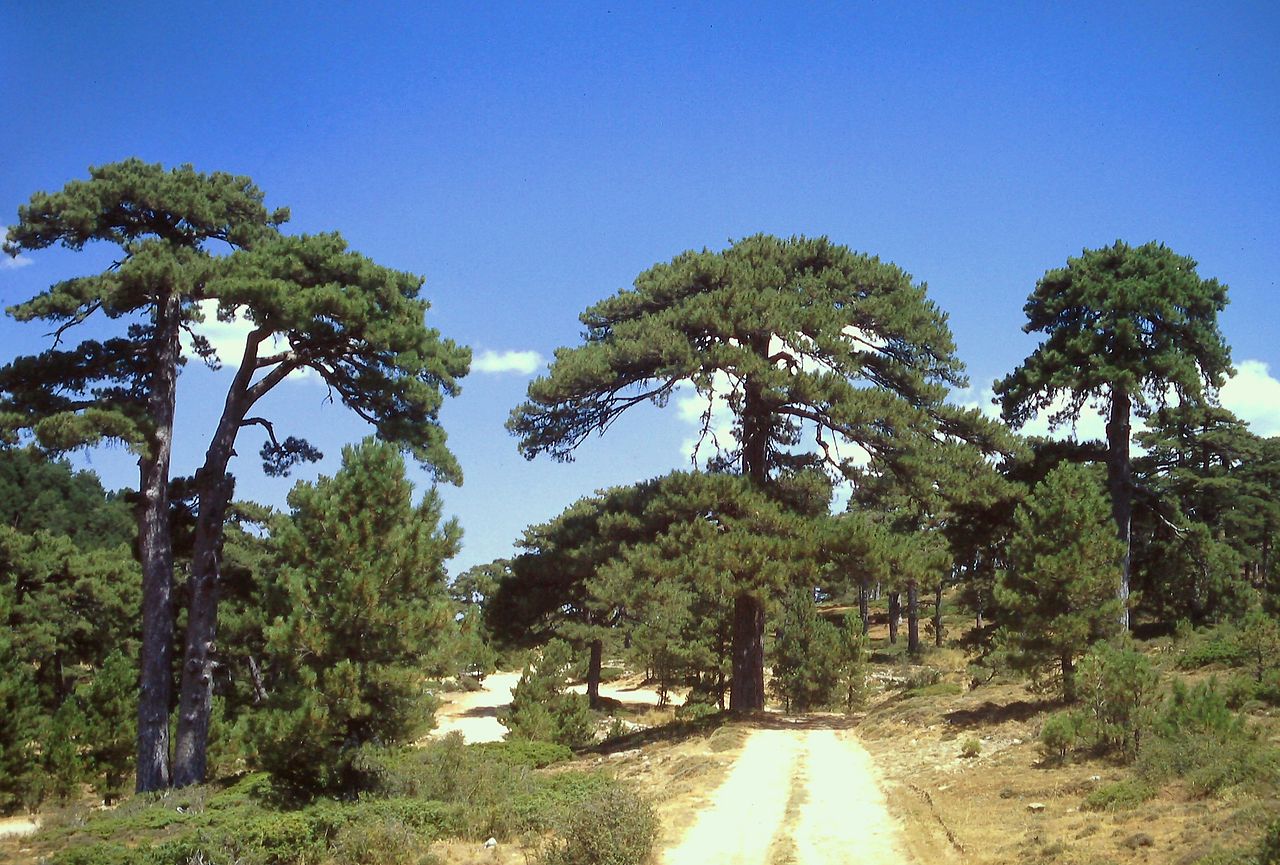
Image - Wikimedia / Jclopezalmansa
The black pine, also known as salgareño pine or black pine, is a conifer that grows to a maximum height of 55 meters, although the most common is that it does not exceed 20 meters. Its leaves are acicular, long, and dark green. Produces small pineapples from late spring to early summer.
Native to Europe, Asia Minor and the Atlas Mountains (North Africa), it is a large tree that it resists frosts down to -18ºC.
Semi-deciduous or semi-evergreen trees
To complicate the matter a bit, there are other types of trees that do not fit into the category of evergreen or deciduous, but have their own. They are semi-deciduous, or semi-perennial, depending on what you want to call them. They partially lose their leaves at some time of the year, depending on the climate or its own nature.
Thus, for example, Brachychiton populneus it tends to run out of more or less half of its leaves in winter for a few weeks, before blooming. There are others, such as the Delonix, that although they are evergreen in humid tropical climates, in which there is a more pronounced drought or it is colder, they behave as semi-deciduous.
Examples of semi-deciduous / semi-evergreen trees
Acer sempervirens

Image - Wikimedia / Lathiot
El Acer sempervirens It is a tree that reaches 10 meters meters, with a trunk whose diameter is about 50 centimeters. Its leaves are simple or lobed, glossy dark green, and small, no more than 4 centimeters long. Its flowers are also small, greenish-yellow, hanging and sprout in spring.
It grows in southwestern Europe and southwestern Asia, making it one of the most appropriate maple species for hot-temperate and dry climates. Resists up to -18ºC. It can behave as a perennial the warmer and more humid the climate.
Brachychiton populneus (bottle tree)
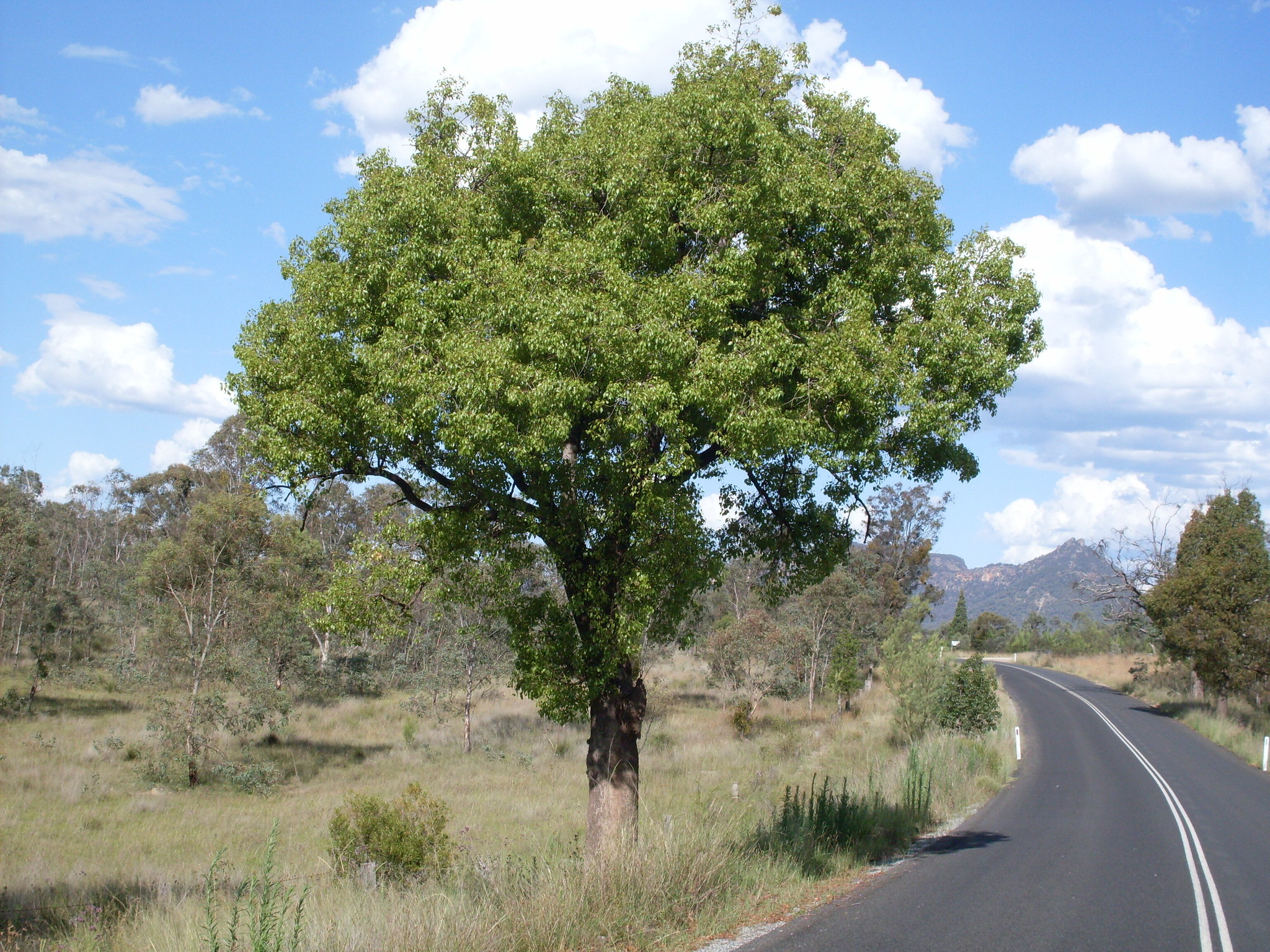
Image - Flickr / John Tann
El bottle tree It is a tree that reaches 10-12 meters in height, with a straight and not very thick trunk (it can measure about 30-40 centimeters thick). Its crown is heavily populated by lanceolate to ovate-lanceolate leaves, bright dark green on the upper surface and darker on the underside. These can partially fall in winter. During spring, it produces small, reddish flowers.
Natural of Australia, it is a plant that it resists drought and frost very well down to -7ºC.
Delonix direction (flamboyant)
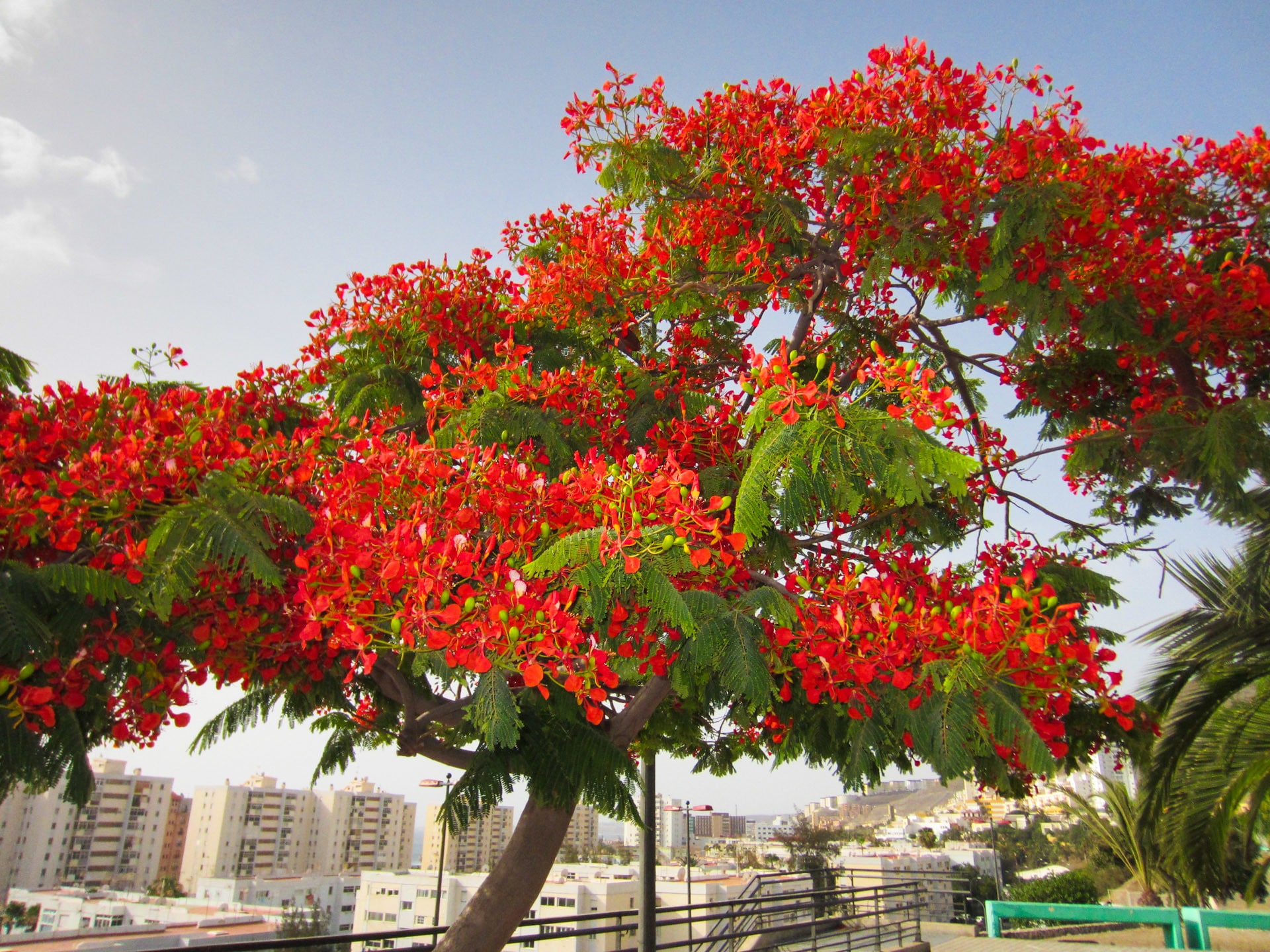
Image - Flickr / er Guiri
El flamboyant It is a tree that reaches 12 meters in height, and has a parasol crown composed of pinnate leaves. It is a very attractive species, since in spring it produces flowers of about 8 centimeters in length, red or orange.
Its natural habitat is the dry deciduous forest of Madagascar, so it might well be thought that it is deciduous; however, in less harsh climates it may only partially lose its foliage. In case the climate is tropical rainy, the most normal thing is that it behaves like a perennial. Does not resist frost.
Ulmus parvifolia (Chinese elm)
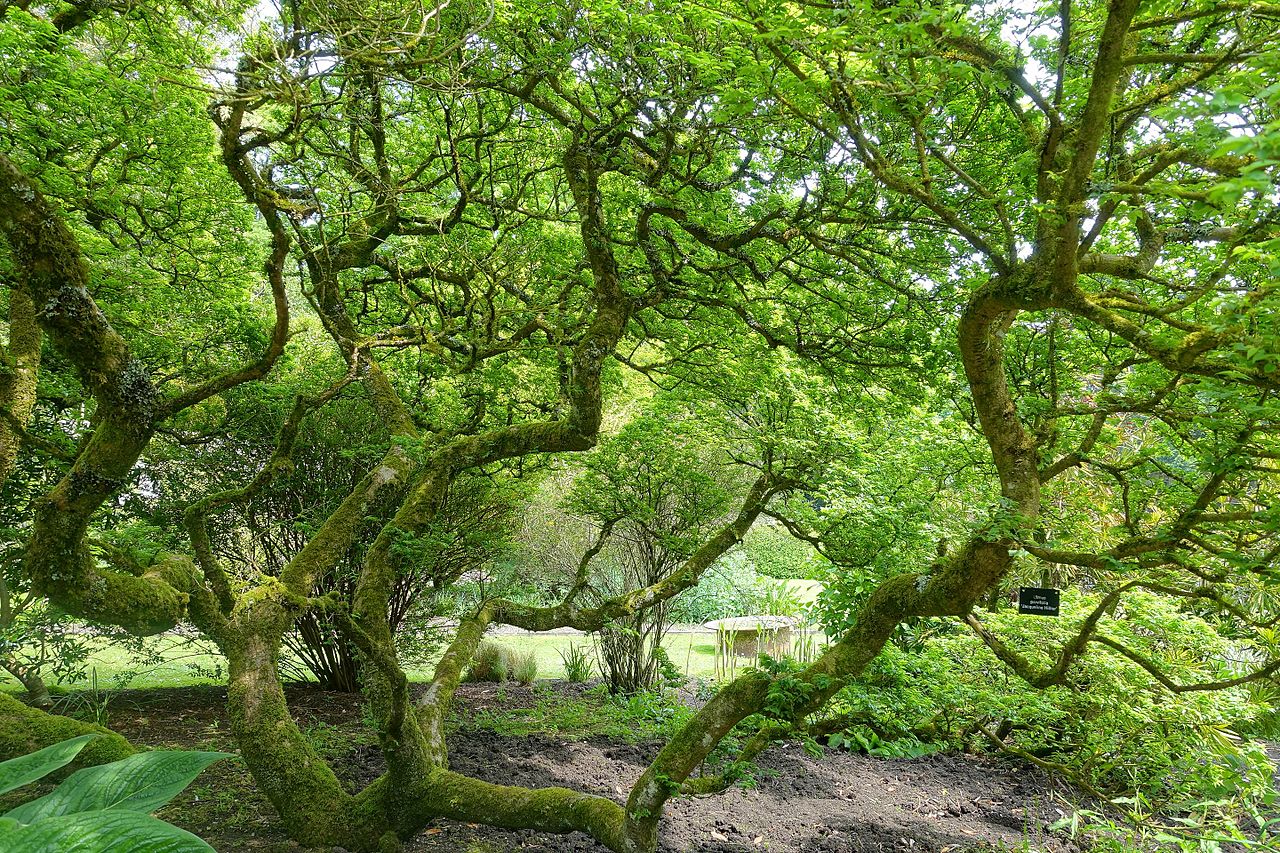
El chinese elm it is a tree that reaches 20 meters. It has a crown populated by small, simple and alternate leaves, green in color. It blooms in late summer, producing very small, green, or white or reddish flowers.
Its origin is in China, Japan, Korea (both North and South) and Vietnam. Resists up to -18ºC.
Did you know the differences between deciduous and evergreen trees?
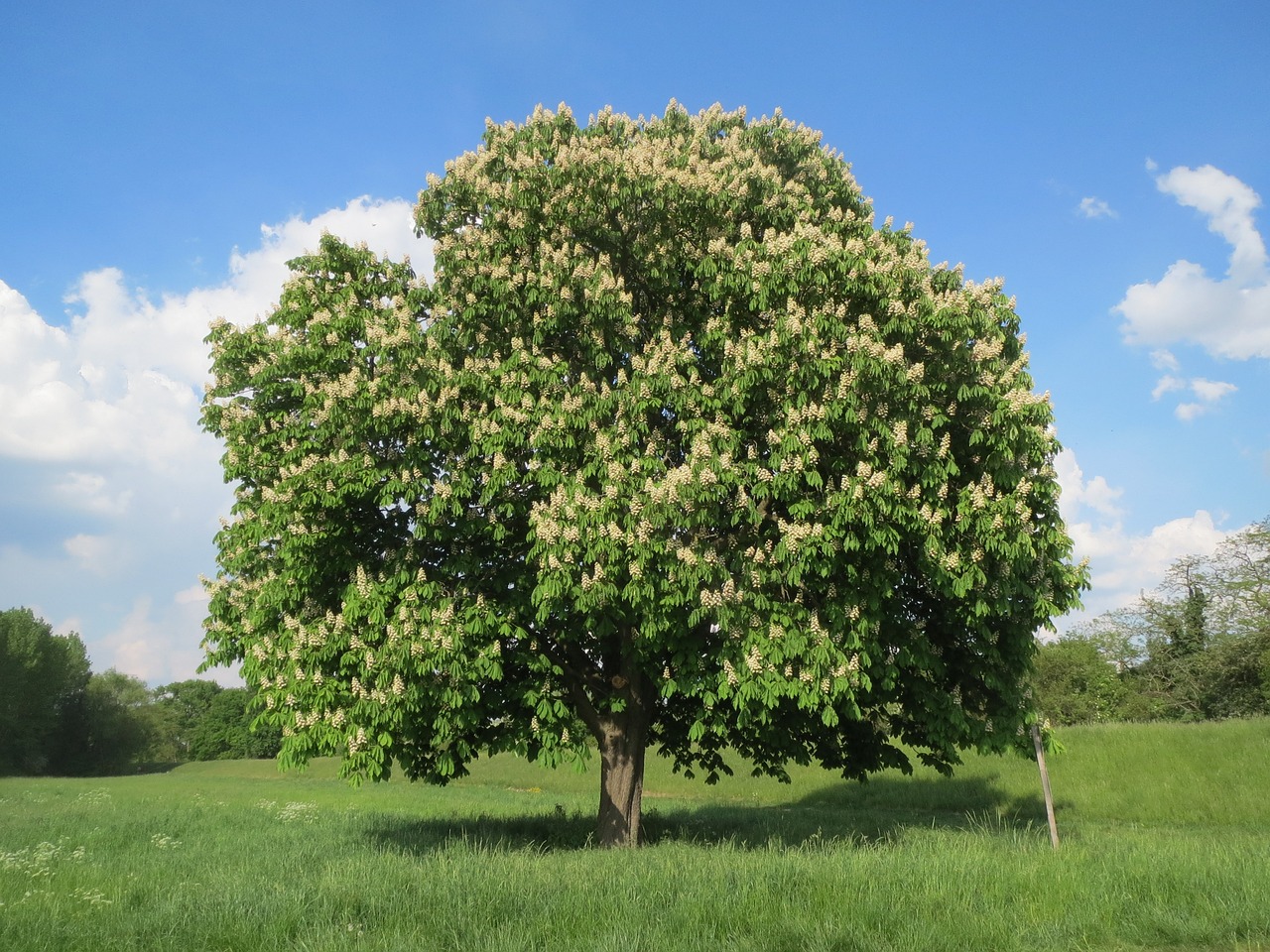
I really liked this article about the things that we think are true but are really of another kind of response and this text shows it very clearly